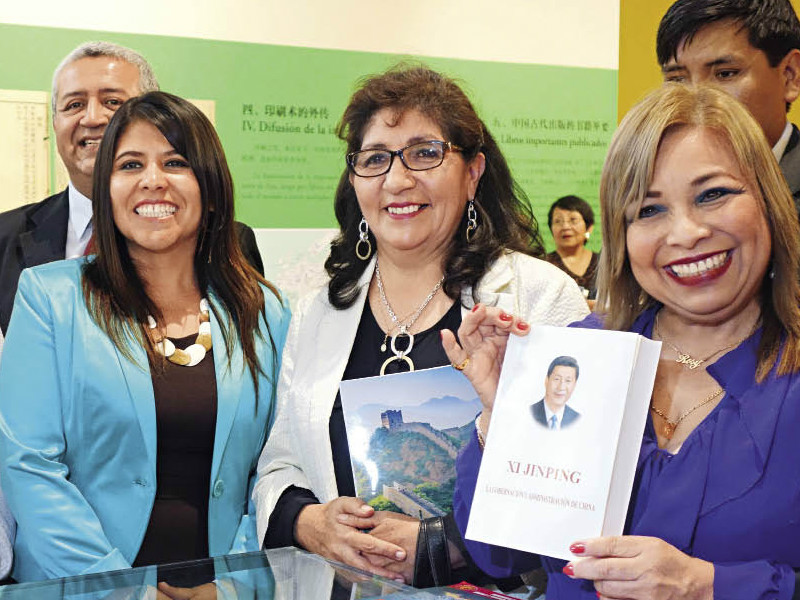“The Chinese people have risen.” With these words Chairman Mao Zedong announced the victory of the Chinese revolution on October 1, 1949. Since then, this day has been celebrated as the anniversary of the founding of the People’s Republic of China (PRC) – marking the beginning of a new era for the country.
Leading up to this date China had endured 100 years of invasions and war that had almost completely destroyed the once flourishing nation, plunging its people into poverty, hardship, and despair.

On the evening of October 1, 2019, thousands of Beijing residents gather in the Tianqiao section along the Central Axis of Beijing. As a display of fireworks, part of the celebrations honoring the 70th anniversary of the country’s founding, kicks off, everyone takes out their cell phones and cameras to record the unforgettable and wonderful moment.
A Country Once on the Brink of Collapse
After the end of the war against the Japanese invaders in 1945 and in the following years under the rule of Kuomintang, China was one of the poorest countries in the world. Indescribable impoverishment, bitter privations and hunger were omnipresent. The average life expectancy of Chinese at that time was just about 35 years.
Such was the dire situation on the day the PRC was founded. The Communist Party of China (CPC), led by its leader Mao Zedong, and the victorious People’s Liberation Army (PLA) faced a tremendous number of challenges.
The country lay in ruins, transportation systems were largely non-functional, agriculture lay in ruins, and the irrigation system severely damaged, especially by the blasting of river dikes.
There was also great hardship in many Chinese cities, where speculation and corrupt administrations had caused the collapse of food supplies and people were literally starving to death on the streets.
After the victory over the Japanese imperialists and the Kuomintang army, the most urgent task for the country was to clear the rubble, provide the people with food and the most basic necessities of life, and rebuild society according to socialist principles.
One could say that this was the hour zero when the victorious communists laid the foundations for the new, modern China. Despite struggling with the many challenges during the first years of the new country, the CPC managed to stabilize the state and ensure the systematic construction of the PRC.
At that time, hardly anyone expected that the development of the Chinese economy and society would one day become a truly unique success story – certainly not to the extent it has.
After struggling with a number of difficulties and setbacks in the early years of the country’s independence, the measures taken by Deng Xiaoping in 1978 marked a crucial turning point.
The steps towards the opening and initial reform, which at that time were still very cautious, proved to be extremely successful, being evident at an early stage. Before long a revival of the Chinese economy was noticeable, and as the country’s dynamic growth gained momentum, it paved the way for China to develop into the world’s second largest economy.

On August 14, 2019, at the 24th Dalian International Automotive Exhibition, cars from more than 380 manufacturers across the globe are put on display.
Reform and Opening-up
It was a very eventful time, when from December 18 to 22, 1978, the third plenary session of the 11th CPC Central Committee was convened in China’s capital Beijing. What was decided in the Great Hall of the People was such a fundamental reorientation that historians often speak of it as a “new” or “second revolution.”
This is now known as China’s entry into the period of “reform and opening-up.” Looking at it more closely, the paradigm of reform and opening-up referred to two important political areas: On the one hand, there was the reform within the country and, on the other, a careful opening-up to the outside world.
The internal reforms were intended to fundamentally change the economic system and other parameters that had slowed down the development of China’s productive potential in the past. The first reform steps of the new state leadership led to the establishment of four special economic zones – a measure that proved its worth many times over in the further development of the country. The opening of the coastal, river and border regions, which was also decided on, was the basis for foreign trade success and ultimately led to China’s full participation in economic globalization.
Becoming a Global Benchmark of Development
China today is an emerging, dynamic country that is developing at a rapid pace and whose economic power has now become a global benchmark.
Today, China is really omnipresent: China’s cutting-edge technology has for some time been conquering the world market, Chinese consumer goods have become an indispensable part of shopping malls around the world, and also in the fields of culture and science, modern China is a major influencer.
The development which the country has undergone since the beginning of its policy of reform and opening-up is breathtaking – the path China has taken is as unique as it is effective.
First Personal Encounter
What seems to be taken for granted today, was hardly imaginable not too long ago. My first personal encounter with a person from China in the mid-1980s is one I still fondly remember.
The country, which at the time was still largely isolated and closed off, had only just begun to open up carefully to the outside world and, at the same time, to introduce the first steps of reform at home. In this context, it was also the first time that Chinese students were allowed to travel abroad for exchange.
Li Jie was the name of the pleasant young lady I met in the student residence at that time. She had come to Germany to learn the language and to study for one semester at the Faculty of Economics of the Albert-Ludwigs-University of Freiburg. Despite language barriers, we shared many good conversations.
I vividly remember her surprise when I told her that I regularly listen to German-language radio programs from China. Radio Beijing, now called China Radio International, which was already the most important source of first-hand information about China at that time.
The daily radio broadcasts from Beijing had aroused my interest in China and my fascination for this distant country.
It was therefore particularly exciting for me to learn more about life in China through direct conversations, and Li Jie was also curious to find out what was important for people in Germany at that time.

The first-ever Chinese book center in South America is established in Lima, Peru on November 20, 2016.
Vitality and Dynamism
Deng Xiaoping once said, “We must realistically recognize the economic situation of our country, which has been damaged by Lin Biao and the ‘Gang of Four’ over a long period of time, and come to a consensus about it.”
Today, there is nothing left of the economic situation that Deng Xiaoping was talking about. Since the beginning of reform and opening-up, China has freed itself from poverty with great momentum and transformed itself into a society full of vitality and dynamism.
If you walk through the streets and squares of Chinese towns and villages nowadays, you will be amazed by the colorful variety and the cheerful lifestyle of the Chinese. The country has succeeded in reviving the Chinese civilization and restoring the people’s self-confidence and pride through growing economic and political success.
China has changed in many ways, and today there is still a great deal of energy being put into further developing the country’s economy and society and improving people’s life. A particularly spectacular example for this is the Belt and Road Initiative, which now involves more than 160 states and international organizations.
Continuing the Chinese Path
The Belt and Road Initiative was proposed by Chinese President Xi Jinping in 2013 during his visit to Central and South Asia.
The aim of this initiative is to more closely link China with the outside world, to intensify cooperation with other countries on the basis of mutual benefit and thus to give new impetus to the national and international economy.
The Belt and Road Initiative consistently continues on the path of reform and opening-up with breathtaking dynamism.
The path China has taken will help the country’s economy and society to develop further, from which the whole world will ultimately benefit.
This year, the PRC is celebrating the 70th anniversary of its founding. As Chairman Mao said all those years ago, we see that today the Chinese people have definitely risen and can look back proudly on a time of transition, great efforts, and privations. But above all, there is the confidence of people who have witnessed a time of great achievements and successes that are unparalleled in world’s history.
HELMUT MATT is a German writer and scholar on China.








